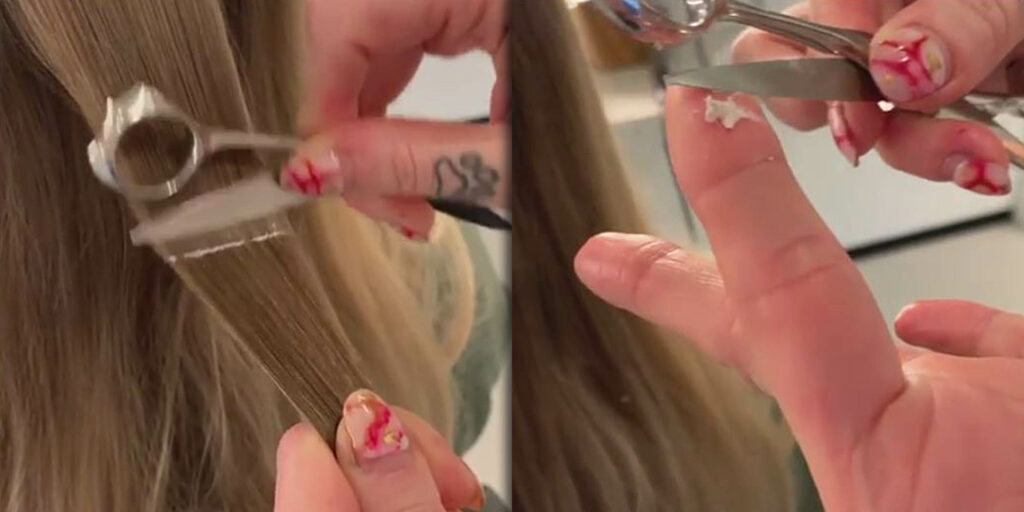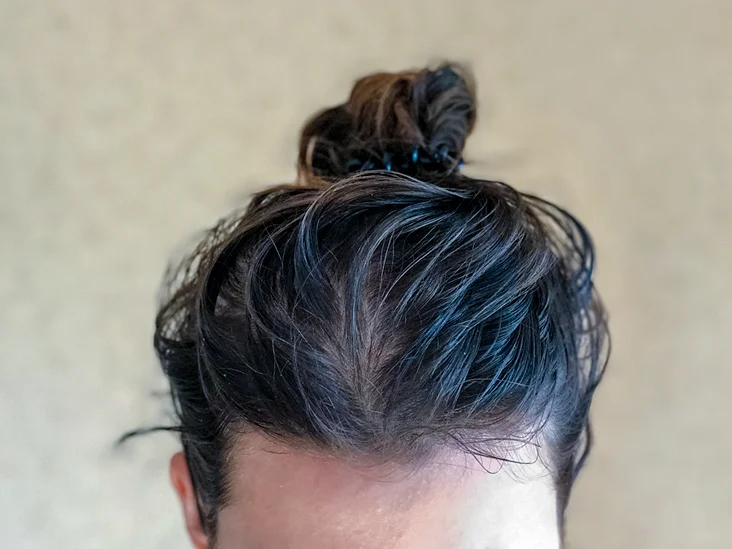Introduction
Product build-up is what it sounds like. Your scalp is covered in a greasy layer that makes it look flaky and oily. Residue from hair products that gradually build on the scalp over time causes this film. Product build-up is one of the most sneaky problems that could happen without our knowledge. Ironically, it is brought on by-products meant to make your hair look and feel better. These factors contribute to the fact that many of us need to notice product buildup on our scalps. At least not until it is bad enough to show damaging consequences.
Since hair is unpredictable. Most of us have spent some time developing a regimen that maintains our manes. This is so our hair remains in good condition and looking their best. That routine often calls for one, two, three, or even five products to complete the task. But it turns out that occasionally such products could be more harmful than beneficial. If you’re either
- Using the wrong products for your hair,
- Piling on products in excess,
- Or neglecting exfoliation as part of your scalp and hair regimen,
You might start to suffer with product buildup sooner or later (which can cause hair to look more limp, heavy, or oily).

Avoiding product buildup involves being proactive rather than reactive. It’s possible to stop product buildup in your life in many wonderful yet easy ways. Let’s look in-depth at how we can eliminate product buildup in hair and on our scalp.
Symptoms and common causes
You see, over time, styling products like
- Sprays,
- Serums,
- Waxes,
- Creams, and so forth.
Leave behind their sneaky by-products. These by-products include silicone, mineral oils, poly quats, polymers, and other chemicals. These chemicals give your hair shine and smoothness but leave behind sticky, non-soluble residues.
Also, non-soluble chemicals are difficult to remove with ordinary shampoos. As a substitute, they stick to hair strands and deposit on the scalp, blocking hair follicles. As a result, the scalp irritates and the hair strands become fragile and break easily. This is why so many people experience sudden hair fall when their hair starts to accumulate buildup.
The result of this? Your shampoo and especially your conditioner tend to stay on the hair, rather than wash off. Thus, further causing more buildup on the scalp and the hair.
How to get rid of product build-up in your hair
Use a clarifying shampoo
A clarifying shampoo removes all traces of buildup and cleans the scalp’s clogged pores from the inside out. In a single motion, it completely washes, exfoliates, and hydrates.
See how it lifts your hair after using it once a week. It’s a great technique to cleanse the scalp and hair.
An apple cider vinegar rinse
Apple cider vinegar has antibacterial and deep-cleansing qualities. These assist in removing product buildup from the hair and scalp. It also helps in removing debris, grease, and other irritants. Additionally, it has a low pH—this aids in smoothing the hair and maintaining a healthy scalp.
However, always remember to dilute it first.

Try a baking soda scrub
Baking soda is a common DIY item used to exfoliate the scalp. The No Poo Method is frequently used to clean the scalp. However, you should take caution since it might raise the pH of your hair.
Try a micellar water shampoo
Because they function like dirt magnets, micellar cleansers are useful at eliminating product buildup in hair. Plus they are mild, non-stripping, and sulfate-free.
To make any sticky residues soluble, micellar water bonds to contaminants, allowing you to rinse your hair with clean water to remove them.
Give yourself a weekly deep cleanse
Building up a product takes time. As cosmetics are used and left in the hair without being washed out, it gradually builds up over time. So, don’t blame the most recent product you just bought.
Use a clarifying shampoo to do a weekly thorough cleaning to ensure that sticky residues like silicone, waxes, and gels are completely removed.
We promise that it will make your hair feel lighter, your scalp healthier, and your hair will look and feel better overall.
10 Symptoms of product build-up
Dull-looking hair,
As a rule, you will notice that your hair seems quite dull in appearance. This makes it very simple to identify when your hair is suffering from buildup.
Whatever you attempt to change it into, it simply remains the same.
Normally, your hair won’t be able to absorb anything at this stage. Not even water, leave-in conditioner, or anything else.
Hair that won’t hold its shape
Have you ever curled your hair only for it to not hold its shape? No matter how many times you’ve used hair spray? This is because this can be a symptom of buildup in the hair.
Your hair requires moisture to look its best, and it must be able to absorb that moisture. This is prevented by product buildup since there isn’t enough “space” for your hair to absorb the moisture.
Dry-feeling hair
Dry hair has long been a tell-tale sign that there is something lacking in your hair care routine. Dry, split ends indicate that there is surely buildup that is causing your hair to become dry, brittle, and split. Especially at the ends.
Limp hair
Limp hair is something that is considered a nightmare for most people. Having hair that just hangs and has no texture or shape can be terrible. However, as unfortunate as it is, it is a perfect indicator of how much buildup your hair has.
Greasy scalp but dry hair
The most obvious symptom of product buildup and residues causing an imbalance is this. This develops as the scalp attempts to clear its pores by creating more sebum. This is in response to the hair strands’ struggle to absorb moisture.
The ultimate result is a mixture of dry ends and greasy roots.
Lack of volume in the hair
Dry and lifeless hair will never rise from the roots. No matter how many volumizing sprays you try, it will always seem dull and flat. When your hair is covered with grease, getting volume and definition becomes almost difficult.
Itchy or irritated scalp
An angry scalp is a clogged scalp. As gunk piles up around your roots, the scalp pores grow congested.
The outcome is that the blocked pores become infected and irritated. The scalp begins to itch and reacts by fighting the dirt.
Loss of texture or curl pattern in natural hair
Your curls may be overrun with moisture-blocking dirt, rendering your products ineffective. This is what happens if your natural hair fails to maintain its definition and its actual curl pattern.
Severe hair fall
Dry and lifeless hair will eventually lead to hair loss from mid-length onwards. Your hair struggles to retain length as it withers from a lack of moisture. If the older pieces aren’t nurtured back into strong strands, they begin to break and snap like dry twigs.
You find yourself using way more shampoo than usual
Your hair never feels clean. No matter how much shampoo your use and no matter how many times you clean it.
Your scalp is always covered with a gritty, oily sensation. The reason for this is because your scalp is exerting more effort to create sebum. This is in an effort to counter product residue that is clogging pores.
Common causes of build-up

Film-forming chemicals are often to blame for buildup. Substances like
- Mineral oil,
- Petroleum,
- Waxes,
- Butters,
- Heavy oils,
- High molecular weight silicones
Are a few examples (like dimethicone and amodimethicone). These chemicals are frequently insoluble in water and difficult to remove in the shower. Therefore, while not all of your items create buildup, some may include a couple of these components and do so over time. PS: You don’t need to avoid or dislike these substances. You only need to know of the need to periodically check and remove buildup. Here are some common causes of buildup that you may have overlooked.
Excessive use of products
The most obvious. If you’re using products like gels and waxes on your hair excessively, you’re bound to get buildup. Always make sure to follow the directions and take note of how much product to apply. These directions are always listed on the packaging itself.
Not using a sulfate shampoo
Like most trends, hair products are also constantly going in and out of trends. Sulfate shampoos or shampoos that contain a healthy amount of sulfate were also a trend a few years ago. Many people and “hair experts” warned that sulfate wasn’t an ideal chemical that you should use on your scalp. Thus, sulfate-free shampoos became very popular. However, in a surprising turn of events, turns out that sulfate shampoos really are useful, afterall. Though they shouldn’t be used every wash, sulfate shampoos help strip the hair of buildup.
Your hair type
One of the most infuriating answers, but it is worth noting. There are just some hair and scalp types that are prone to accumulating buildup on the hair. The science goes, if you have thicker, denser hair, the more buil-up you will accumulate.
Did you like reading this article? If you’d like to keep reading, might we suggest looking into topics like Why Do Black Women Wear Wigs? and How To Dye a Human Hair Wig? Happy reading!